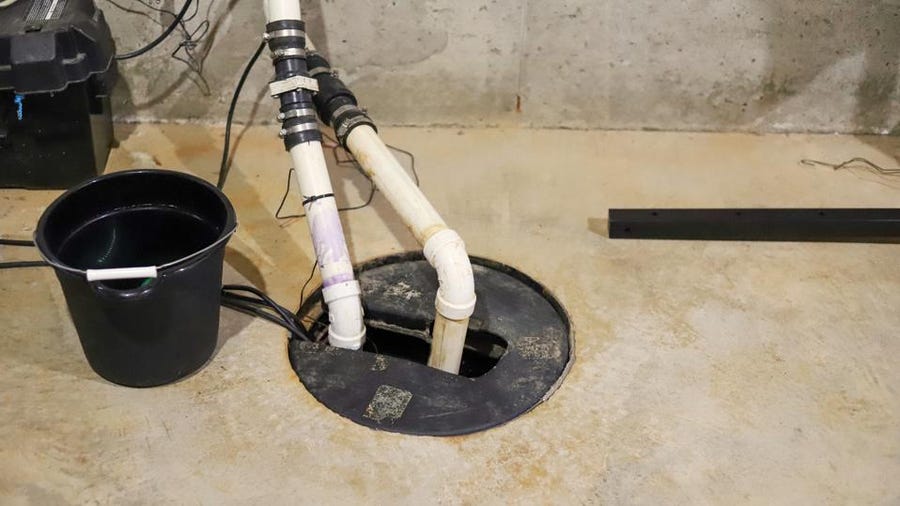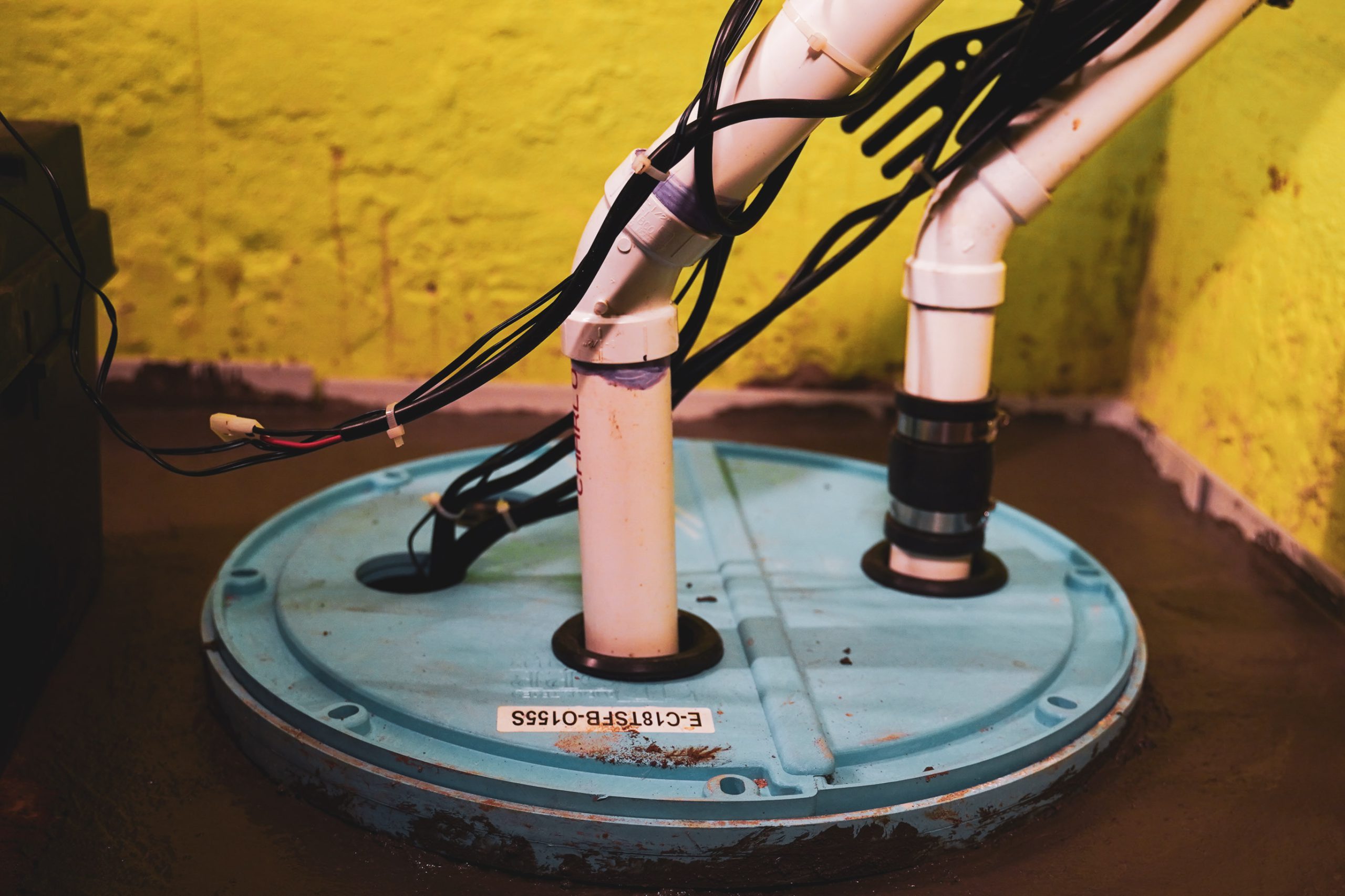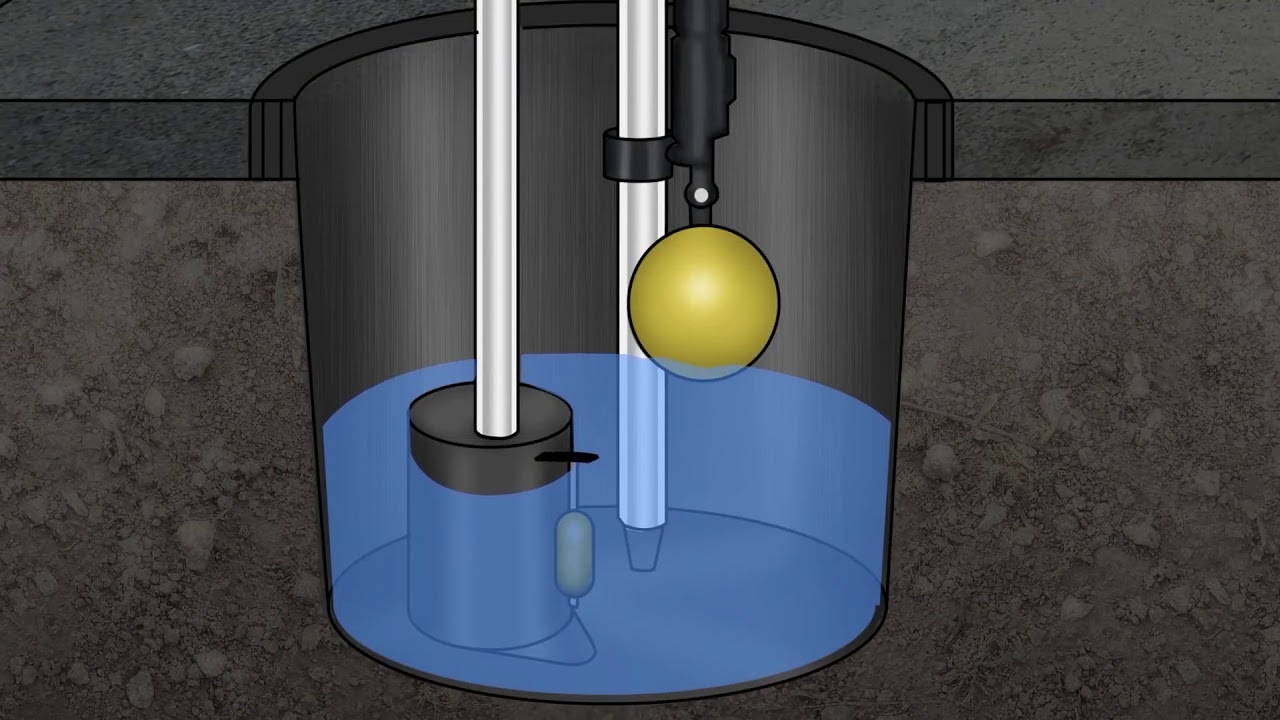For homeowners with a crawl space, maintenance is key to having a healthy and safe home. A sump pump system in the lowest part of your crawl space helps keep water out and away from your foundation. Properly caring for your sump pump will ensure it operates as intended and keeps your home free of potential flooding or water damage.
This guide will cover the basics of sump pump maintenance in a crawl space, including checking for proper operation and what to do when it’s time to replace your system. Let’s get into it.
Basics To Sump Pump Installation And Uses
A sump pump is a tiny, electrically operated water pump located in a lined hole known as a sump pit. The pump is designed so that it is submerged in water. Whenever the water level reaches a specific level or height, the pump starts functioning automatically to expel water. The pump will turn off when the water level drops to a moderate level. The sump pump is a constant guard, so it’ll work 24 hours, seven days a week.
There are a few functions that a sump pump performs whenever a water level rises to a specific limit.
Expels Regular Basement Water
The first and crucial function performed by the sump pump is: it’ll do groundwater intrusion in your home regularly. It is one of the most common uses of sump pumps. When a sump pump is turned on, there is no use for an alarm because the pump is already doing its job.
The water coming from the basement towards the house from sideways or below is seized by permeable rock-filled drains, then that water is directed to the sump pit, and pumps send it back towards the outside.
Expels Water From Flooding
The next and the least common, a sump pump, can evacuate vast quantities of water whenever an unexpected event occurs, such as a storm or heavy rain. A high-quality sump pump has the potential to expel water up to 4,000 to 5,000 gallons per hour of discharge flow.
It indicates that a sump can expel your home’s water during any destructive event, including minor flooding or leakage of a water pipe. However, these incidents rarely happen; sump pumps are mainly used to deal with regular water intrusion. It’ll also prevent flooding and excess water seepage.
When And How Often Should Sump Pumps Be Maintained?
It’d be better to check your sump pumps every day but do proper maintenance only once a year. Sump pumps are working critically so your home functions well. You should check your pump’s working several times a year besides maintenance.
When the spring season begins, those are the days you need to check your pump. The underground water level rises in response to snow melting or precipitation on those days. Early springs and late winters are perfect for maintaining your sump pumps.
Remember that we cannot predict underground water level movement. Because besides the season, many other factors can be involved, such as local pumping operations, soil type, or variation in precipitation. It means you should keep an eye on your sump throughout the year.
Your sump pumps will only function properly when you provide an excellent electrical connection. Even if you buy a high-quality sump pump but need to offer it more electricity or the circuit breaker is flipped off, it won’t turn on. It’d be better to watch the GFCI outlet and the circuit breaker frequently.

Steps To Maintain Your Sump Pump
Several simple steps and checkpoints can help ensure that your sump pump runs optimally and is prepared in case of heavy rain or flooding.
1. Get An Idea Of The Sump Pump’s Functionalities
A deep study of the unit is essential to maintain your sump pump. Also, it is the pillar of sump maintenance. An extensive study of the unit will give you an idea of what you can expect regarding your pump’s strengths, weaknesses, and needs.
As a beginner, here are some points you should have an idea about:
The age of the pump’s unit, the older pump will likely have more problems compared to the new one.
From where can you get your hands on replacement parts?
Any existing issues to look out for?
If you’ve just purchased a new sump pump, read all the instructions and keep them in a safe place for future use. You can also keep a digital copy on your PC or smartphone for accessible reference. You can try to stay safe by putting your physical instructions in a ziplock bag and taping it to the wall near the sump pump.
If you need to learn about the type of your pump. For instance, if you’ve bought a new home or reside in a rented property, you need to know about your sump pump. You can get a clue by checking the model number that’s written on the motor. Check the pump’s brand name if the number needs to be written. Then further look for the type of pump, whether it is a pedestal or submersible sump pump. That determination is easy. You can tell by looking at appearances.
Submersible Pumps: A submersible pump contains a motor that has the potential to work underground. That’s why the engine is fitted inside the sump pit.
Pedestal Sump Pump: A pedestal sump pump contains a long stand that raises the motor above the pit and level of the floor. The design of both pumps is different. However, both have the same parts, such as the motor, power cords, float switch, impeller, and pipe fitting for the discharge pipe.
2. Check Your Sump Pump Periodically
You cannot predict how and when your basement may face events like storms and floods. Therefore, it’s essential to check your sump pump maintenance once a month. It’ll give you an idea of whether your pump is working as it should or not. You must ensure that your sump pump is attached to its power source and pour water into the sump pit. Deeply observe how the pump is running and note down if the pump is making any weird noise.
Signs Of A Problem
Like any other machine, when there is a problem with it, there are a few signs to look out for. When there is an issue with your sump pump, here are some of the symptoms you will observe:
- Odd noises are coming out of the pump to indicate a worn-out part.
- Grinding or rattling noises is a sign of a jammed or damaged impeller.
- If you hear signs of vibration, it means that the impeller is deformed or bent.
- The sump pump automatically turns on and off when it should be working, which means there is an issue with the internal wiring.
- The oil leakage indicates that your sump pump will fail to work soon.
If you face any of the mentioned issues, it’d be better to call a professional instantly because your sump pump needs maintenance from an expert. Or you might have to replace your pump.
3. Deep Clean Your Sump Pump
For maintenance, keeping your sump pump and sump pit clean should be your top priority. Cleanliness increases the lifespan of your pumps, along with enhancing their efficiency.
Here are some of the steps you need to follow while cleaning your sump pump:
Power off your sump pump and ensure no family member is using any appliances that will drain water into the sump pump, such as the washing machine.
Use the garden hose for rinsing the sump. Afterward, remove the caked debris using the plastic scraper or putty knife.
Use a wet vac for cleaning the sump pump.
After cleaning and drying your sump pump, reattach the pump to the discharge pipe and connect the plug to its power source.

4. Properly Covered Equipment
Proper covering of the equipment of your sump pump is essential. Because it prevents your pump from larger debris, lint, and sediment from failing into the sump pit, the covering should fit as snugly as possible and should have holes only for wires and the stand if you’re using a pedestal pump; sump pumps, and drainage pipe. This additional precaution doesn’t rule out cleaning the pump pit every day. However, you will have to make less effort while cleaning when the equipment is adequately covered.
5. Check The Discharge Line
Sometimes, water might be drained slowly from your sump pit. It happens not because of a problem with your pump but due to the issue within your drainage pipes. When you check your sump pump’s functionality, inspect your drainage pipes and try to erase any visible blockage.
6. Get A Backup Sump Pump
If you are a resident of an area where heavy rainfall occurs, it is common for the power to go out in that season. That’s why you should consider installing a backup sump pump that doesn’t require electricity. Generally, these sump pumps generate a battery or water pressure from home. They are less efficient than submersible or pedestal pumps. However, they can benefit when there is no electricity because they aren’t dependent on electricity.
Standard Sump Pumps Issues And Their Solutions
If your sump pump isn’t functioning accordingly or not turning on. You can fix it on your own. These fixes can revolve around the electrical connection, water discharge and intake, and float-switch mechanisms.
a. Pump Not Turning On
The water level may be too low, so it’s not triggering the operation. Also, your fuse is blown, or the circuit breaker is tripped on the service panel. You can pull out the pump and ensure that the inlet valve isn’t blocked with debris.
b. Pump Not Turning Off
Check whether the float switch on the pump is working correctly. If it’s not functioning accurately, then replace the switch. Observe the discharge pipe and remove any distractions. If your sump pump is constantly running, it might need to be undersized to do the job. Stepping up to the higher level pump with more significant discharge is the only solution to fix such issues.
c. Sump Pump Starts And Stops Frequently
If you are using an undersized pump, then your pump might be a problem itself. However, the solution is straightforward and inexpensive: the discharge often has a blockage that causes backflow. Hence, water that is trying to discharge is prevented from doing so. Which is why the water flows backward instead of drained. It filled the sump pit and pushed the sump pump to start again.
d. When To Replace Your Pump
Now the question can arise: When should you consider replacing your pump? Whether you change it while it is still working?
Now the answer to this question is always debatable. Some professionals say the sump pump should be replaced every ten years, whether it’s working or not.
If the motor starts creating issues, it is usually challenging to fix. Also, it might be more expensive compared to replacing the sump pump. Most sump pump manufacturers give a warranty of up to three to five years.
FAQs
1. How Long Can A Sump Pump Function Efficiently?
The average lifespan of a sump pump is around seven years. However, you can extend this lifespan by timely maintenance of your sump pump and extra care.
2. If You Cannot Determine The Model Of Your Sump Pump, What Do You Need To Do?
Check the unit of your sump pump for the brand name, model number, or type. However, if you are still looking for the model, you can call an expert to assist you with your sump pump needs.
3. Do You Require A Sump Pump For Every Crawl Space?
The answer is yes. If you have a basement or crawl space, you must install a sump pump. Your property is prone to flooding, leakage, or water damage with a pump. A sump pump can protect your crawl space from weather-related damage.
4. How Often Should You Test The Sump Pump?
The best practice is to test the sump pump once a month. Also, it is beneficial to have a yearly checkup by an expert for optimal performance and a longer lifespan of your sump pump.


